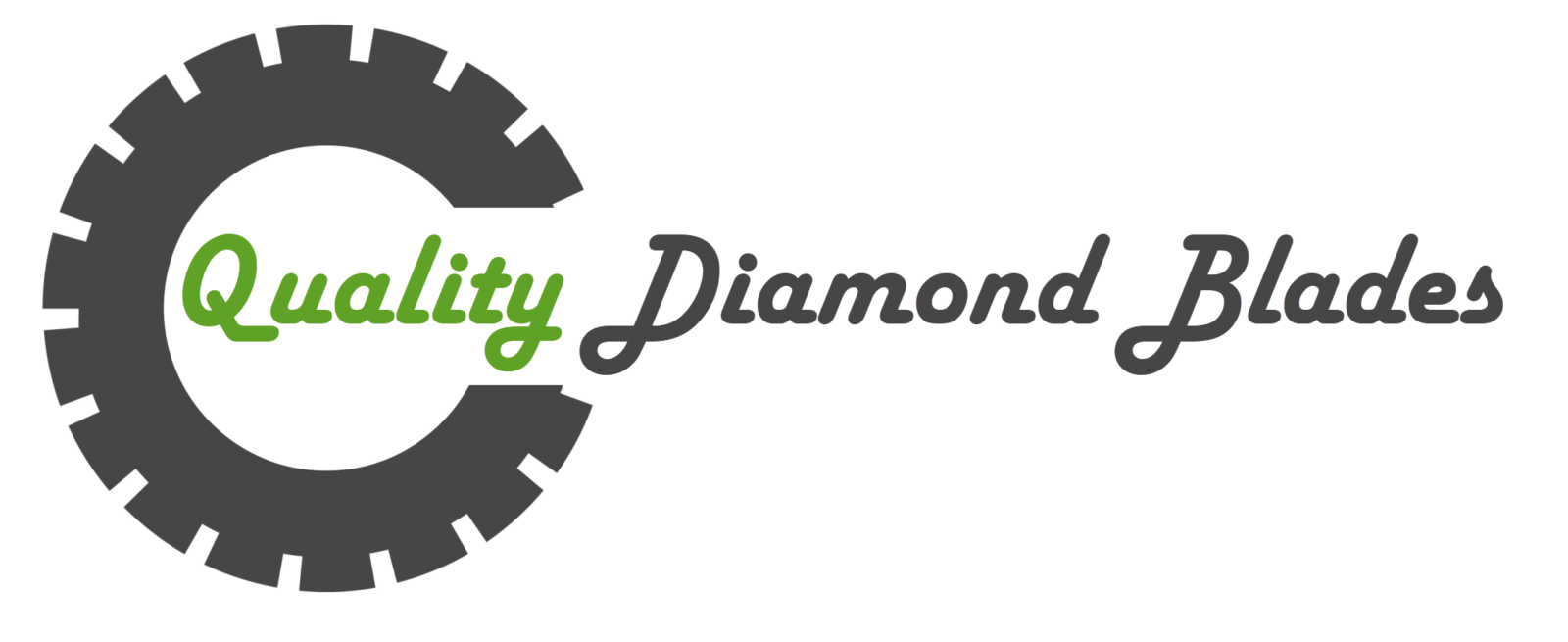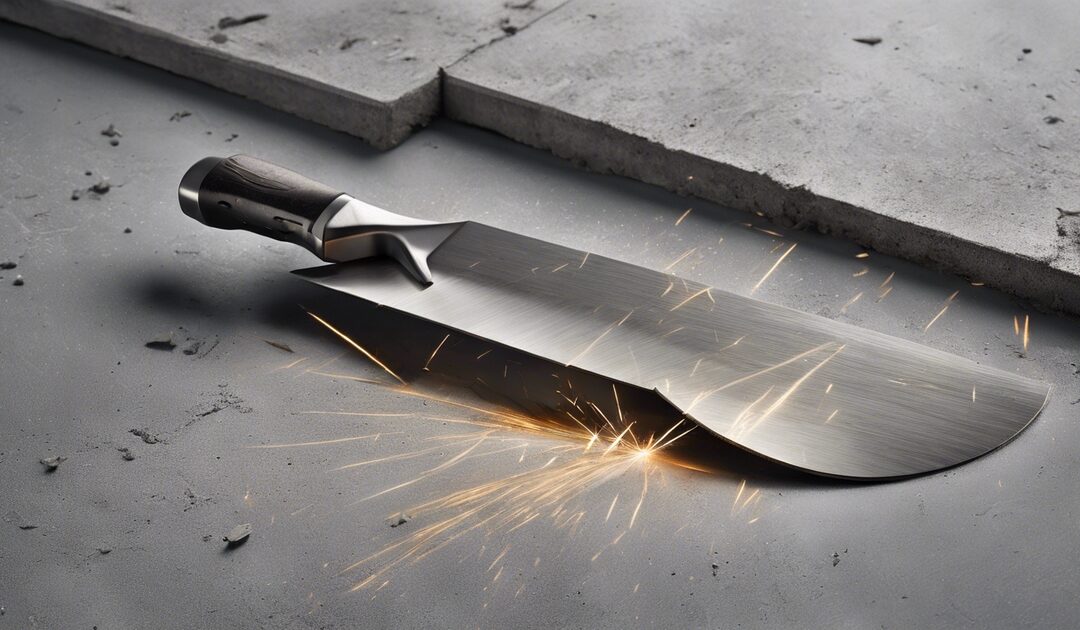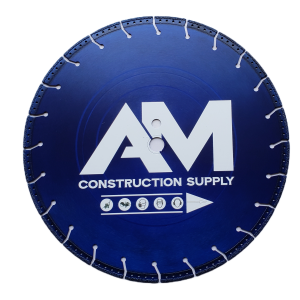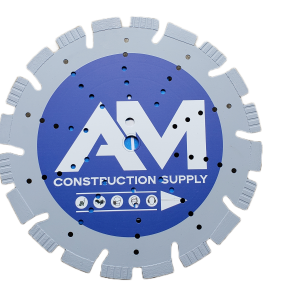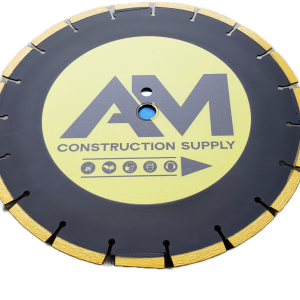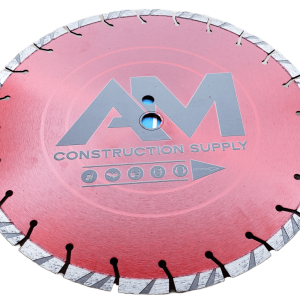-
-
What are diamond blades and why are they used for cutting concrete?
-
How do I choose the right diamond blade for concrete cutting?
-
What innovative features should I look for in a diamond blade?
-
Are there success stories of using quality diamond blades for concrete projects?
-
What aftercare and maintenance practices prolong the life of a diamond blade?
-
Choosing the right tools can make or break your concrete cutting job. While many options flood the market, not all blades are created equal. The best diamond blades for cutting concrete stand out for their durability and precision, slicing through tough materials with ease where others falter. This guide zeroes in on those top performers, designed to save you time and hassle. We’ll dive into what makes these blades a cut above the rest, ensuring your next project is not just completed, but completed with unmatched efficiency and quality. Whether you’re a seasoned professional or tackling DIY projects, understanding the key features of these essential tools will elevate your work to new heights.
Key Takeaways
- Understand the Basics: Before selecting a diamond blade for cutting concrete, grasp the fundamentals of how diamond blades work. This knowledge will help you make an informed choice.
- Match the Blade to the Job: Not all diamond blades are created equal. Choose a blade that’s specifically designed for cutting concrete to ensure efficiency and longevity.
- Invest in Quality: Opting for high-quality diamond blades might seem costly upfront but can save money in the long run by reducing replacement frequency and improving cut quality.
- Consider Innovative Features: Look for blades with innovative features like cooling holes or noise-reducing cores, which can enhance performance and user comfort.
- Learn from Others: Success stories can provide valuable insights into which blades perform best in real-world conditions, guiding your purchase decision.
- Maintain Your Blades: Proper aftercare and maintenance extend the life of your diamond blades, ensuring they remain effective for future projects.
Understanding Diamond Blades
Composition
Diamond blades boast a unique structure. They have layers of diamond crystals bonded to a metal matrix. This composition is crucial for the blade’s cutting ability and longevity. The diamond crystals do the cutting, while the matrix holds them in place.
The right diamond concentration makes a difference. A blade with too few diamonds might cut slowly or wear out fast. One with too many might not cut effectively. Thus, selecting a blade with the right diamond concentration for specific concrete tasks is vital.
Types
There are mainly three types of diamond blades: segmented, continuous rim, and turbo blades.
- Segmented blades are perfect for dry cutting. They have gaps that keep the blade cool.
- Continuous rim blades give smooth cuts, ideal for tile or marble.
- Turbo blades combine speed and clean cutting. They work well for both wet and dry applications.
Each type affects the speed and quality of the cut differently. Knowing which one to use can save time and ensure a high-quality finish.
Applications
Diamond blades are versatile tools. They can cut various types of concrete, including reinforced concrete. Professionals use them in construction projects, while DIY enthusiasts find them useful for home renovations.
They’re used in multiple applications:
- Cutting concrete pavers for landscaping projects.
- Making precise cuts in large concrete slabs during construction.
Their versatility extends from small home projects to large-scale industrial uses.
Choosing Right
Choosing the right diamond blade involves assessing the concrete’s hardness first. It’s wise to consult with experts or manufacturers to find the most suitable blade. The saw type—wet or dry—also influences blade selection.
For example, wet saws require blades designed for wet cutting to prevent overheating and ensure longevity. On the other hand, dry-cutting blades are built to withstand higher temperatures without water cooling.
Concrete Cutting Essentials
Concrete Types
Cutting through concrete demands understanding its type and composition. Fresh concrete, also known as green concrete, differs vastly from cured concrete in hardness and abrasiveness. The aggregate size and type within the concrete significantly influence the choice of diamond blade. Larger aggregates require blades with deeper segments to cut efficiently without rapid wear.
For abrasive materials like asphalt or green concrete, blades designed specifically for these materials reduce wear and extend the blade’s life. Such blades often feature softer bond segments that allow for quicker exposure of new diamonds, maintaining the blade’s cutting ability.
Cutting Techniques
Proper cutting techniques are crucial not only for extending the blade’s life but also for ensuring safety during operation. It begins with a gradual entry into the material, preventing blade overheating and potential breakage. The distinction between wet and dry cutting methods is essential here. Wet cutting minimizes dust and cools the blade, ideal for longer cuts in tough materials. Dry cutting offers convenience and speed for shorter or shallower cuts but requires efficient dust management.
Maintaining optimal blade speed and pressure ensures efficient cutting without overloading the blade or the saw. Too much pressure can dull the blade faster, while insufficient pressure results in ineffective cutting and excessive wear.
Safety Measures
Safety cannot be overstated when using diamond blades for concrete cutting. Wearing appropriate personal protective equipment (PPE) shields against flying debris, noise, and dust. The risk of silica dust is particularly high with dry cutting—highlighting the importance of dust suppression methods such as wet cutting or vacuum systems.
Before each use, checking the blade for damage or wear is vital to prevent accidents. A damaged blade can shatter or cause uneven cuts, posing serious risks to operators.
Diamond Blades and Concrete
Blade Selection
Bond Types
The bond type of a diamond blade plays a crucial role in its performance. Soft, medium, and hard bonds are designed to match the hardness of the concrete being cut. A soft bond is ideal for hard concrete, as it wears out at the right pace, exposing fresh diamonds. Conversely, a hard bond suits soft concrete better by resisting wear and extending the blade’s life. The key is selecting a bond that prevents premature wear or inefficient cutting. This balance ensures that diamonds are exposed at an optimal rate, enhancing cutting efficiency.
Segment Design
Segment design significantly influences debris removal and cooling during cutting operations. Narrow segments facilitate faster debris removal but may reduce precision. Wide or continuous segments offer smoother cuts but might overheat without proper cooling mechanisms. The segment shape directly impacts cutting speed and precision, making it vital to choose based on specific job requirements. For instance, segmented blades are better for rough cuts in tough materials, while continuous rim blades excel in clean and precise cuts.
Performance Factors
Several factors affect the performance of diamond blades. These include blade diameter, segment height, and diamond quality. Larger diameters allow deeper cuts but require more power from the saw. Higher segment heights extend blade life by providing more material for wear over time. High-quality diamonds ensure consistent cutting ability across various materials.
Matching blade specifications to both the saw’s power and the material’s hardness optimizes performance. Employing proper cutting techniques and maintaining equipment can significantly enhance a blade’s effectiveness.
Maintenance Tips
Regular cleaning of the diamond blade is essential to prevent material build-up that can hamper its efficiency. Inspecting the blade for signs of wear or damage helps in deciding when replacement is necessary to maintain optimal performance levels.
Periodically dressing the blade exposes new diamonds, ensuring consistent cutting ability throughout its lifespan. This practice not only extends the blade’s usability but also maintains its cutting precision.
Why Choose Quality Diamond Blades
Durability
Quality diamond blades stand out for their long-lasting durability. The diamond quality and the blade’s composition play crucial roles here. A high-grade diamond ensures the blade cuts through concrete efficiently without quick wear. The bond type and segment design tailored to concrete significantly impact performance. For instance, a soft bond is ideal for hard materials, ensuring the diamonds are exposed at the right rate for optimal cutting.
Proper usage and maintenance also contribute to a blade’s lifespan. Running the blade at the correct speed and avoiding overheating can prevent premature wear. This approach not only extends the life of your diamond blade but also maintains its cutting efficiency over time.
Efficiency
Using the right diamond blade not only saves time but also minimizes material waste. Unlike abrasive blades that wear down quickly, diamond blades make clean, precise cuts in concrete. This precision reduces the need for additional finishing work, saving both time and resources.
Investing in a high-quality diamond blade proves cost-effective in the long run. While the initial cost may be higher than standard blades, their longevity and efficiency translate into fewer replacements and consistent performance across numerous projects.
Variety
The market offers a wide variety of diamond blades tailored to different materials and conditions. Beyond general-purpose blades, specialty options cater to unique tasks like tuck-pointing or crack chasing. These specialized blades ensure optimal performance by addressing specific challenges presented by different concrete types or cutting requirements.
Exploring these options allows users to find a blade that matches their specific needs perfectly, enhancing overall cutting performance. Whether dealing with reinforced concrete or needing intricate cuts, there’s a diamond blade designed for the task.
Support
Selecting the right diamond blade can be daunting given the vast options available. Fortunately, manufacturers offer comprehensive support to guide users in their choice. Through customer service channels or in-store experts, professionals provide valuable advice tailored to specific cutting tasks or materials.
This support is invaluable for tackling challenging projects or when using unfamiliar equipment. It ensures that users not only choose the most suitable blade but also apply it correctly for maximum efficiency and safety.
Comparing Diamond Blades
Asphalt vs Concrete
Choosing the right diamond blade for cutting involves understanding the material’s properties. Asphalt and concrete, while both are used in paving, have distinct differences that affect blade choice. Concrete is harder than asphalt, necessitating a softer bond in the diamond blade to ensure efficient cutting. This softer bond allows the diamonds to be exposed more quickly, keeping the blade sharp as it grinds through hard materials.
Asphalt, on the other hand, is more abrasive and can cause rapid wear on blades not specifically designed for it. Blades optimized for asphalt use hard bonds to resist this abrasiveness. They cut effectively without wearing down too quickly. For professionals dealing with road repairs or construction, selecting a blade that matches these characteristics is crucial for performance and longevity.
Brick vs Stone
Cutting brick and stone requires consideration of each material’s density and abrasiveness. Bricks are generally less dense than most stones, which means they can be cut with blades having a softer bond. This ensures efficient cutting without excessive wear on the blade.
When it comes to natural stone, however, the situation changes. Stone varies greatly in density and abrasiveness; therefore, specialized diamond blades are recommended to achieve clean cuts. These blades often have segments designed specifically for stone’s unique properties. Furthermore, using water when cutting stone is essential. It reduces dust and helps prolong the life of the diamond blade by keeping it cool during cutting operations.
Pavers vs Block
The differences between concrete pavers and blocks significantly influence the choice of diamond blades. Pavers are usually smaller and less dense than blocks, requiring precision in cutting to avoid chipping or breaking them unnecessarily. A slower cutting speed with a precise blade can ensure smooth edges and maintain aesthetics.
Blocks demand a different approach due to their larger size and higher density. Blades with wider segments are preferable as they offer a larger surface area suited for cutting through thick blocks efficiently. This design also helps distribute wear evenly across the blade, extending its lifespan.
Innovative Features
Cooling Holes
Cooling holes play a critical role in reducing heat buildup during the cutting process. They allow air to flow through the blade, which helps dissipate heat more efficiently. This cooling effect not only prevents the blade from overheating but also extends its life by maintaining its structural integrity under high temperatures. For those tackling intensive or prolonged cutting tasks, selecting diamond blades equipped with cooling holes is advisable. These blades can handle the heat without compromising performance.
The presence of cooling holes also ensures that the blade remains cool enough to retain its shape and sharpness over time. This feature is particularly beneficial when making repeated cuts in hard materials like concrete.
Tensioned Steel Core
The tensioned steel core of a diamond blade serves as its backbone, preventing warping and ensuring straight cuts. A stable core is crucial for maintaining cutting accuracy, especially in long cuts where precision is paramount. The tension within the steel core keeps it rigid during operation, allowing for clean and accurate cuts every time.
Regular checks on the blade’s core integrity should be part of maintenance routines. This ensures that the blade continues to perform at its best, delivering consistent results without any compromise on quality or safety.
Laser Welded Segments
Laser-welded segments offer unmatched strength and durability among diamond blades. The precision of laser welding allows for the use of higher-quality diamonds and more exact placement of segments. This results in a blade that can tackle demanding applications, such as cutting through reinforced concrete, with ease.
Opting for laser-welded blades means investing in a tool designed to withstand tough conditions without faltering. These blades are recommended for professional-grade projects where reliability and longevity are key considerations.
Success Stories
Professional Testimonials
Contractors and construction professionals often emphasize the critical role of selecting the right diamond blades for concrete cutting. John Smith, a contractor with over 15 years of experience, shared his journey from using generic blades to switching to high-quality diamond blades. He noticed a significant improvement in cutting speed and blade lifespan, which led to reduced project times and costs.
Smith’s story is not unique. Another professional, Lisa Chen, highlighted how choosing the right blade for different concrete types transformed her projects. She experienced fewer blade changes and less downtime, emphasizing the durability and efficiency of premium diamond blades. These testimonials underline the real-world benefits of investing in quality tools for specific tasks.
Case Studies
A compelling case study involves a construction team facing a challenging demolition project with reinforced concrete. The team initially struggled with standard blades that wore out quickly and couldn’t cut through the steel reinforcement efficiently. After switching to specially designed diamond blades, they saw an immediate improvement. The blades’ innovative features, such as enhanced diamond segments for tougher materials, allowed for smoother cuts and faster completion times.
Another example comes from a road repair project in harsh weather conditions. The selected diamond blade had to withstand both the tough aggregate of the concrete and fluctuating temperatures. The project’s success was attributed to a blade that featured a unique bond matrix, allowing it to maintain optimal performance throughout its use. This case study demonstrates how understanding material properties and environmental factors can lead to better outcomes.
Making the Purchase
Identifying Needs
Before diving into the purchase, it’s crucial to assess your concrete cutting needs. Consider the scale of your project. Is it a small DIY task or a large-scale construction job? The type of material you’re cutting also matters. Not all concrete is the same; some are reinforced with metal bars, requiring a more robust blade.
Think about the finish you desire. A smooth, precise cut may need a different blade than one used for rough, quick tasks. Also, don’t overlook future projects. Opting for a versatile blade can save money and space in the long run.
Safety and efficiency should be at the forefront of your decision-making process. A suitable blade reduces the risk of accidents and ensures quicker completion of tasks.
Consulting Experts
The value of expert advice cannot be overstated when selecting diamond blades for concrete cutting. Manufacturers and specialists possess deep knowledge about their products’ capabilities and limitations. They can provide personalized recommendations based on your specific needs.
Don’t hesitate to reach out for consultations. Many experts are more than willing to discuss your project in detail, offering tailored advice that could prevent costly mistakes. This step is especially beneficial if you’ve read success stories in the previous section but aren’t sure how to replicate those results in your context.
Leveraging expert knowledge ensures you achieve optimal cutting results, enhancing both safety and efficiency on the job.
Online vs In-Store
Choosing where to buy your diamond blade involves weighing the benefits and drawbacks of online versus in-store purchases.
Online shopping offers unparalleled convenience and a broader selection of products. You can easily compare prices, read customer reviews, and check detailed product specifications from the comfort of your home. However, this method lacks personalized advice that might be crucial for making an informed decision.
In contrast, buying in-store allows for hands-on guidance from knowledgeable staff. They can answer questions on the spot and help you pick a suitable blade based on their experience. The main drawback is that physical stores often have limited stock compared to online marketplaces.
Regardless of where you decide to shop, doing thorough research is key. Look into customer reviews and product specifications online to ensure you’re making a well-informed purchase decision.
Aftercare and Maintenance
Cleaning Tips
After purchasing the best diamond blades for cutting concrete, proper cleaning is crucial. Use a soft brush and mild detergent to remove debris gently. This method ensures that the cutting efficiency remains high without damaging the blade.
Harsh chemicals can harm the metal components of your diamond blade. Thus, they should be avoided at all costs. Regular cleaning not only maintains the blade’s performance but also extends its lifespan significantly.
Storage Solutions
Proper storage is key to protecting your diamond blades from environmental damage. Blades should be kept in a dry, cool place away from direct sunlight and moisture. Using protective covers can prevent accidental damage and keep them in optimal condition.
Organizing blades by type and size is also important. It allows for easy access and efficient inventory management. This organization ensures that you can quickly find the right blade for your needs without unnecessary delays.
Repair Services
etimes, even with careful maintenance, diamond blades may require repairs such as re-tipping or sharpening. Professional repair services are available for these needs. They can assess whether a blade can be salvaged through repair or if replacing it would be more cost-effective.
Regular inspections of your diamond blades can catch potential issues early on. This proactive approach helps extend the life of your blades significantly. Consulting with professionals can provide insights into maintaining your equipment in top condition.
Final Remarks
Selecting the best diamond blades for cutting concrete is no small feat, but armed with the knowledge from understanding their design to aftercare, you’re now better equipped to make an informed choice. Quality matters. It ensures efficiency, safety, and longevity in your cutting projects. Remember, investing in top-notch diamond blades pays off by saving time and resources in the long run. Your success stories could be the next inspiration for many, highlighting the importance of choosing wisely and caring for your tools properly.
Now’s the time to take action. Dive into comparing your options, consider innovative features that suit your specific needs, and don’t hesitate to reach out for expert advice if you’re unsure. Once you’ve made your purchase, follow through with diligent aftercare to maximize your investment. Let’s cut right to success with the best tools in hand. Ready to make your mark?
Frequently Asked Questions
What are diamond blades and why are they used for cutting concrete?
Diamond blades are cutting tools with diamonds fixed on their edge. They’re used for cutting concrete because of their unmatched hardness, ensuring precise and efficient cuts.
How do I choose the right diamond blade for concrete cutting?
Select a blade based on the concrete’s hardness, the power of your cutting equipment, and the wet or dry cutting technique. Quality and compatibility lead to better performance.
Why is it important to invest in quality diamond blades?
Quality diamond blades offer longer life, faster cutting, and less downtime. Investing in them ensures efficiency, saving time and money in long-term projects.
Can you compare different types of diamond blades?
Yes, diamond blades vary by bond hardness, segment shape, and whether they’re for wet or dry cutting. Each type caters to specific materials and cutting conditions.
What innovative features should I look for in a diamond blade?
Look for features like cooling holes, noise-reducing cores, and undercut protection. These innovations improve performance, extend lifespan, and enhance safety during use.
Are there success stories of using quality diamond blades for concrete projects?
Absolutely! Many professionals report smoother cuts, fewer blade changes, and overall project cost savings when using high-quality diamond blades in their concrete projects.
What aftercare and maintenance practices prolong the life of a diamond blade?
Regular cleaning, checking for wear or damage, and proper storage are key. Also, using the blade at recommended speeds extends its life significantly.
